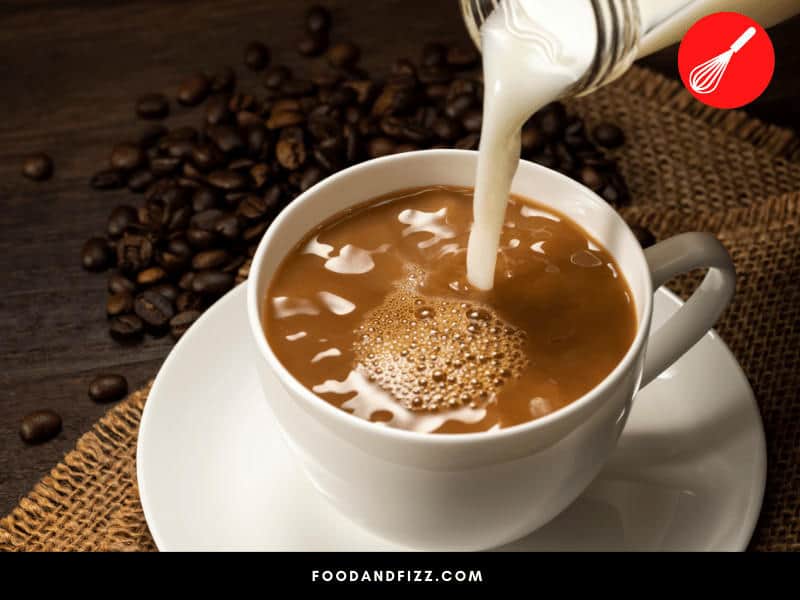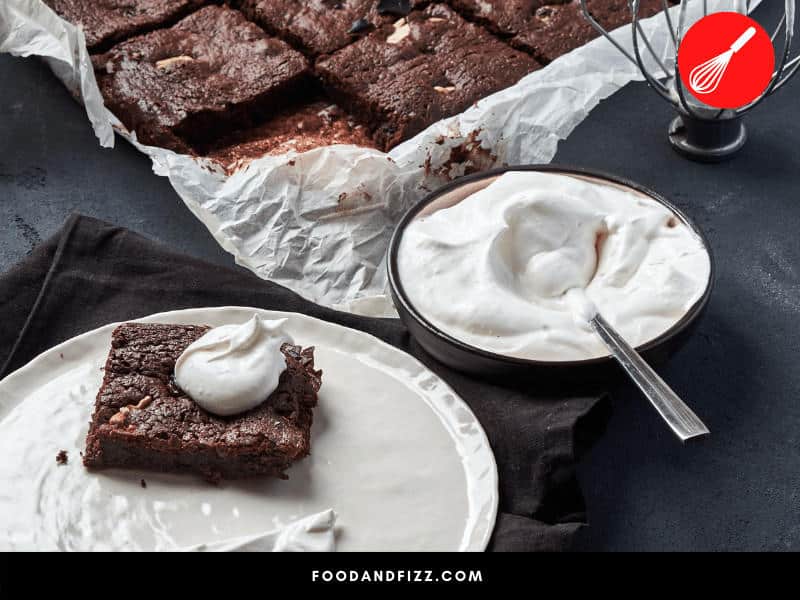Is double cream the same as heavy cream? Cream is one of the most useful and well-loved ingredients in the kitchen. It is used for both sweet recipes and savory recipes and it goes well with pretty much anything.
It is great with meat, grains, vegetables, and fruits and it makes the most fabulous appetizers, show-stopping entrees, and mouth-watering desserts.
It is even great with coffee, with all its blended and hand-crafted variations. It is a well-loved ingredient the world over, and its appeal is undeniable.
Considering how varied the cuisines of the world are, it is pretty amazing that cream, in some type or form, is often present no matter where you are in the world.
While all cream is made from the same thing, which is the fatty layer of cow’s milk that rises to the top of raw milk, the composition of fat can be different. And it is this variation in fat content that determines what type it is and its suitability for different uses.
There’s single cream, double cream, light cream, heavy cream, and clotted cream. What’s the difference?
We know that single cream and double cream are different, solely by their names, with the latter one referring to something that’s a little bit more indulgent.
But what about the other types? Heavy Cream, for example, and Double Cream, are they similar in composition and can they be substituted for each other?
Is Double cream the same as Heavy Cream?
Is Double Cream the Same as Heavy Cream?
Double Cream and Heavy Cream are both rich and indulgent creams that contain milk fat of above 35%, however, Double Cream is richer and thicker, with a fat content of 48%. Heavy Cream is common in the U.S. as well as in other parts of the world, but Double Cream is mostly just found in Europe. They are technically not the same, but in culinary use, they can be acceptable substitutes for each other.

What is Cream?
Cream is the fatty layer of milk that rises to the top in unhomogenized, raw milk. Because fat is less dense, it rises to the top. In industrial settings, there are machines that accelerate this process to speed up the separation procedure.
What is skimmed off is what is known as cream.
The percentage of milkfat the cream contains determines the kind of cream, and therefore its recommended use. Grading would vary depending on the country, but some types of cream like light cream and heavy cream, would have similar gradings in most parts of the world.
Types of Cream and Their Uses
Below are the different types of cream and their uses.
1. Half-and-Half
Half and half, as the name implies, is composed of a mixture of half milk and half heavy cream. According to the FDA, the milk fat content of half-and-half should be between 10.5 to 18%, but in the U.S., the average content is 12%.
It is used when you want something that’s a little creamier than milk, but lighter than cream. Half-and-half is excellent as a coffee creamer.

2. Single Cream or Light Cream
A slight step up to half-and-half in terms of richness is Light cream (or Single Cream in other countries). It is a little heavier than half-and-half but still lighter than heavy cream with a milk fat content of 18-30%.
It is still not fatty enough to be able to hold up to whipping but it can be used to make sauces and soups a little bit richer and heartier compared to when milk is used or as a lighter alternative to whipping cream when used to pour over dishes or desserts prior to serving.
3. Light Whipping Cream
Light whipping cream has a fat content in the range of 30-35%, and a can be used in a lot of recipes calling for heavy whipped cream but since it doesn’t have as much fat as heavy cream or heavy whipping cream, it won’t be as stable.
It is good to use as a filling or a topping for drinks and desserts, or if you just want something lighter than heavy cream. But whether it can be substituted for heavy cream or heavy whipping cream in recipes depends on what you are making.

4. Heavy Cream or Heavy Whipping Cream
Heavy cream or heavy whipping cream, according to the FDA must have a milk fat content of at least 36%, making it one of the fattiest and richest creams that we have access to. (at least in the U.S.).
It is decadent, rich, and is the most stable for whipping, because of its very high fat content. And of course, it tastes extremely good. The most indulgent desserts you can think of probably has heavy cream or heavy whipping cream in there, including most people’s favorite cream, ice cream.
Apart from desserts, it can also be used in savory cooking. You can actually elevate the richness of your mac and cheese by using heavy cream instead of milk! “Can I Substitute Heavy Cream for Milk in Mac and Cheese?” explores this very decadent option.
5. Double Cream
If you think heavy whipping cream is the fattiest and richest cream, though, you would be mistaken. Meet Double Cream, with a milk fat content of at least 48%, is by far the most indulgent cream that we know of.
Popular in Europe, double cream is used for piping over fruit or puddings or to make rich and thick sauces.
I remember very clearly my first encounter with the wonder that is Double Cream as if it just happened yesterday. It was during a trip in Gruyerè in Switzerland with my family.

It was served with the most amazing, melt-in-your-mouth meringues and I just could not have enough of it. My life was forever changed. I fell in love with it so much that I just had to bring some of that luscious Double Cream back home (don’t judge me).
6. Sour Cream
Sour cream is also common in the U.S. and is used in various recipes like dips, salads, pancakes, cupcakes, and even on meat and vegetables. It has a fat content of about 20%, and it is made by fermenting regular cream with bacteria, resulting in a tart taste that lends a unique flavor to recipes. Similar to buttermilk, it also makes tender cakes. “What Does Sour Cream Taste Like” explores the flavor intricacies of this pleasantly tart cream.
7. Crème Fraiche
Like Sour cream, Crème Fraiche is also cream that’s been soured by adding bacterial cultures. However, it has a higher milk fat content (30%) than sour cream.
Flavor-wise, it has a milder tart taste than sour cream and is less acidic, but it is more stable in higher temperatures, allowing you to add it to hot dishes without fear of curdling.
8. Clotted Cream
Clotted cream is made by heating up full cream milk, essentially scalding it, and allowing “clots” of cream to rise up to the surface.
This cooled cream is what’s known as clotted cream. It is very popular in England and is popularly served with scones and tea, but it can be served with other baked goods as well.
So, there you have it, some of the most common types of cream, their common uses, and key differences.
From this, we can see that, at least in terms of milk fat content, Double Cream would be closest to Heavy Cream or Heavy Whipping Cream. Does it mean they can work as substitutes for each other?
Is Double Cream the Same as Heavy Cream?
As we have seen, Double Cream and Heavy Cream are quite distinct from each other. While they are both indulgent creams with a milk fat of above 35%, Double Cream has a much higher milk fat content at 48%, making it the richer, more decadent, and more stable cream.
Double cream, though, is mostly just found in Europe and would be difficult to source in other parts of the world. Compared to heavy cream, it is much more elusive; that’s why it is understandable to wonder whether heavy cream would suffice as a substitute for recipes that call for double cream.
The answer is yes, they can be acceptable substitutes for each other. Recipes made with double cream will just be a little richer and creamier, but in finished recipes, you likely won’t even be able to tell.
There are other double cream substitutes as well, depending on what you are making. Check out “12 Best Double Cream Substitutes in the USA” to know more.
If you do get a chance to try double cream, though, I’d highly recommend it. I guarantee that it’s well worth it.
Is Cream Healthy?
The cream may not be very high on the list of healthy foods you should consume in big amounts, but it does contain vitamins and minerals, especially those that are fat-soluble, like Vitamins A, D, E, and K.
Fat-soluble vitamins mean that they are better absorbed by our bodies when they are consumed with fat, which means that they contain more of this than, say, low-fat or non-fat milk.
The cream also contains calcium and protein, and as with other dairy products, helps with bone health.
One side note about low-fat and non-fat milk. It is important to be careful when buying low-fat or non-fat stuff instead of full-fat cream or milk.
Usually, these types of products may even be unhealthier than the original product. Usually, when fat is removed, it has to be replaced, and usually, this replacement is in the form of sugar and other additives. The end product might be low in fat, but it could potentially be high in sugar and other undesirable things.
From a whole-food perspective, it would seem that incorporating a reasonable amount of full-fat cream or dairy in your diet would be more beneficial rather than completely eliminating it or replacing it with “healthier” alternatives that are probably laden with sugar and other additives. If you want to be really sure, it is best always to check the ingredients list.
That said, cream indeed has a high saturated fat content, and saturated fat increases the risk for heart disease and other conditions.
Again though, this means that it is important to consume them in moderation and not go overboard with using them in our kitchen. As with any type of food, we must practice balance and moderation in the way we consume our food.

Frequently Asked Questions
Is Double Cream the Same as Heavy Cream?
Double cream is distinct from heavy cream in that it has more milk fat content at 48%, compared to 36 % for heavy cream. They can, however, be successfully substituted for each other in recipes.
What is the Best Substitute for Double Cream?
The best substitute for double cream is heavy whipping cream because it has the closest fat content to double cream, and will behave similarly in recipes.
Is Whipping Cream the Same as Heavy Cream?
The term “whipping cream”, may refer to both heavy whipping cream and light whipping cream, which are two different types of cream. Light cream has a lower milk fat content at 30-35%, and heavy whipping cream has a milk fat content of above 36%.
Conclusion to Is Double Cream the Same as Heavy Cream?
Double cream is distinct from heavy cream in that it has more fat content than heavy cream; however, as double cream can only be found mostly in Europe, substituting heavy cream (the heaviest heavy cream you can find!) won’t make your recipe any less good.
As I mentioned earlier though, don’t pass up on the chance to try double cream should you get the opportunity to try it. The experience – and the extra fat–is definitely worth it.

